


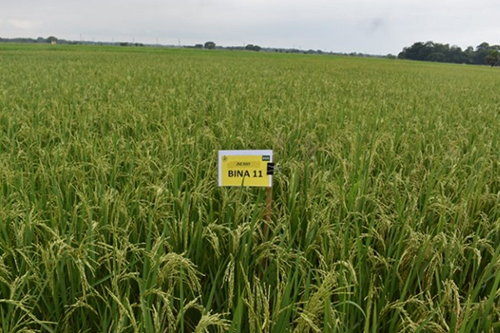
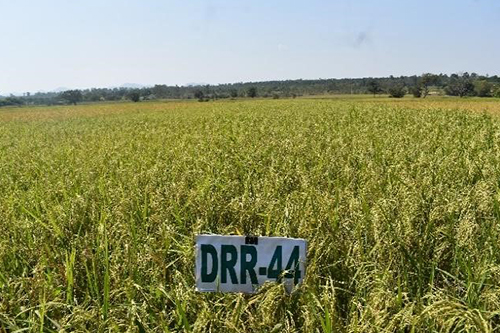
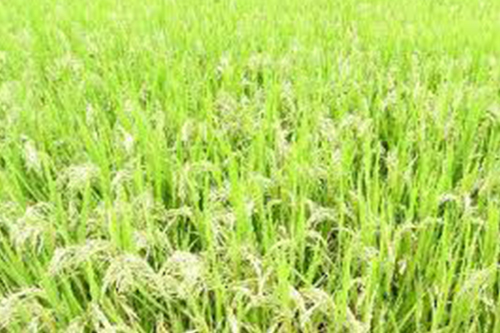
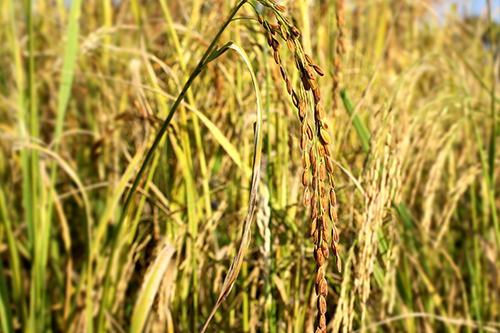
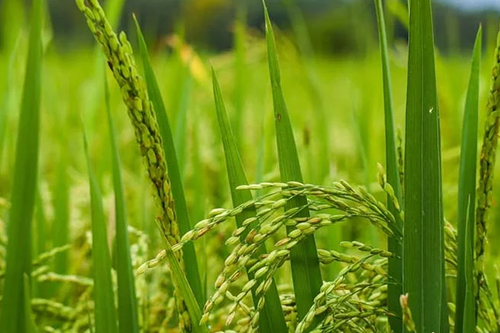
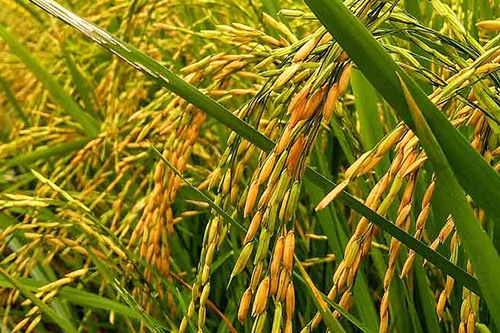
Seed quality: Quality seed is clean (contains no stones, soil particles, weed seeds), genetically pure (contains grains of only one variety) and healthy (full big grains of the same colour, without cracks, and no disease or pest damage).
Seed selection: Seeds are immersed in plain water and stirred well. Seeds, those sink down are selected, and those float are rejected.
Seed treatment: Seed treatment is done by two methods; one is chemical and second is biological treatment. Once the selection process is done, the seeds should be soaked directly in one of the following fungicidal suspensions for 12 hours. Treat the seed with recommended fungicides only. One liter of fungicidal solution is required to treat one kg of seed. Treated seeds should be kept in incubation for 48-72 hours.
| Fungicide (choose any one) | Dose (g/kg seed /liter of water) | Use |
|---|---|---|
| Mancozeb | 2.5 | To avoid damping off, wilt and root- rot in seedling stage |
| Captan | 2.5 | |
| Carbendazim | 2.5 |
Biological method: As an alternative to chemicals, seed may be treated with Trichoderma harzianum @ 10g /kg seed, night before or 6 hrs before sowing to avoid damping off, wilt and root-rot in the seedling stage. The Trichoderma powder is spread and mixed with seed after moistening the seed. The seed is spread on a mat in a thin layer and allowed to dry in shade for 30 minutes. This biological treatment helps increase root length and provides longer disease control throughout the season.
Safety precaution: Plastic gloves should be used while handling chemicals to avoid ill-effects on health
Nursery raising Time of sowingBoro season: November–December is the most appropriate time for raising nursery for targeting transplanting in the last week of January to the first week of February when the seedlings are at 5-6-leaf stage.
Early Ahu season : 2nd fortnight of January is the most appropriate time for raising nursery to target the transplanting by 2nd fortnight of February preferably with short to medium duration varieties, when the seedlings are at 5-6-leaf stage.
Seed rate: 40-45kg per hectare
Nursery-bed size: For one hectare area of the main field, the nursery size varies from 750-1000 m2, but ideally it should not be more than 1/10th of the main-field size. Land is thoroughly puddled and seedbeds of 10 m length, 1.5 m breadth and 15 cm height are prepared keeping a 60-cm gap in between the beds. The length of the bed may vary according to convenience and availability of space.
Low temperature management: Low height poly-tunnel on bamboo structure (height-75cm, width-150 cm and length as per bed size) may be used for raising seedlings during cold periods (mid-Dec to first week of Jan), for advancing transplanting and increasing seedling weight.
After five days of sowing, the seed-bed should be covered with a polyethene sheet/poly tunnel to moderate the microclimate. This will help increase the temperature inside the poly-tunnel. Before transplanting in the main field, the nursery is acclimatized by retrograding to exposure beginning from 7 days prior to transplanting, for an hour at 8.00-9.00AM on the first day, then steadily increasing the exposure on each successive day (8.00-10.00PM, 8.00-12.00PM, 8.00-2.00PM), and thus reaching the exposure for whole day (8.00AM to 4.00PM) on the 5th day, then finally keeping the nursery completely exposed for 2 days before transplanting the seedlings in the main field.
Irrigation:Apply irrigation as per the requirement to maintain saturated seed-bed. Maintain 2-3 cm standing water 2-3 days prior to uprooting.
Plant protection: Adopt plant protection measures in the standing nursery as per standard package of practices.
Seedling priming against insects: As protective measure against stem borer, gall midge and hoppers, the uprooted seedlings are first washed and then their root portion is dipped into 0.02% solution of Chlorpyriphos (2 ml/lit of water) along with 1% urea (10g/lit of water) for 3 hours. Alternatively, spray Chlorpyriphos 20 EC @ 0.02% in a standing nursery 5-7 days before uprooting.
Nursery fertilizer: Use 3-1-2g of N-P₂O₅-K₂O + 2kg manure per m² that is equivalent to 3-1-2 kg N-P₂O₅-K₂O + 2 tons manure for 1000m² of nursery area.
| When? | What? | How much? g/m² or Kg/1000 m² | Application method | |
|---|---|---|---|---|
| Through DAP | Through SSP | |||
| Basal (At sowing) | Manure | 2000 | 2000 | Soil incorporation |
| Urea | 6.0 5.6 | 7.0 6.5 | ||
| DAP | 2.0 2.2 | - | ||
| SSP | - | 6.0 6.3 | ||
| MOP | 3.0 3.3 | 3.0 3.3 |
For preparation of the main plot, the following points should be kept in mind -
Seedling age: Always use 5 to 6-leaf stage seedlings to transplant for better yield
Spacing: Transplant at a distance of 20-25 x 15 cm (8-10 x 6 inches)
Seedling density: 2-3 seedlings per hill
Depth of Transplanting: 4-5 cm
Fertilizer management:For transplanted rice, fertilizer recommendation per hectare is 60-30-30-5kg of N-P2O5-K2O-Zn. The nitrogen dose is splitted into 3 equal applications -1/3 as basal, 1/3 at tillering, and 1/3 at panicle initiation. The detailed schedule and method of applying all nutrients is given in the table below:
| Time of fertiliser application | Name of fertilisers | Fertilizer dose | Application Method | |||
|---|---|---|---|---|---|---|
| (kg/ha) | (kg/bigha) | |||||
| Through DAP | Through SSP | Through DAP | Through SSP | |||
| Basal | Urea | 18.0 | 43.0 | 2.0 2.4 | 6.0 5.7 | Broadcast & incorporate in soil at the time of field preparation |
| DAP | 6565.2 | - | 9.0 8.7 | - | ||
| SSP | - | 188187.5 | - | 25.0 | ||
| MOP | 50.0 | 50.0 | 7.0 6.7 | 7.0 6.7 | ||
| ZnSO4 | 25.0 | 25.0 | 3.0 3.3 | 3.0 3.3 | ||
| Tillering, after first weeding | Urea | 43.0 | 43.0 | 6.0 5.7 | 6.0 5.7 | Topdressing |
| Panicle initiation, after second weeding | Urea | 44.0 | 44.0 | 6.0 5.9 | 6.0 5.9 | Topdressing |
Weeding: Keep the field weed-free especially in the early stage of the crop, as the weeds cause the most damage in the early crop stage. But the later control is also important to prevent seed setting by the weeds. First weeding is done manually or mechanically with paddy weeder or power weeder or hoe at 3 weeks after transplanting, and the second weeding is done at 6 weeks after transplanting.
Herbicide application:Equipment- Given their superior effectiveness, herbicides should only be applied using multi-nozzle booms fitted with flat-fan nozzles. While spraying, the new spray-swath should always overlap 25% of the previous spray-swath margin to ensure uniform application
Pre-emergence (PE) herbicides- Most PE herbicides require moisture on the soil surface at the time of application. Without sufficient moisture, the PE herbicides will not be that much effective. Pre-emergence herbicides can be sprinkled by splash method in 3-5 cm standing water in the field preferably within 2-3 days after transplanting.
Pre-emergence herbicides supplemented with one hand weeding may be more effective to take care of the germinated weeds, and the weeds emerging later in the season.
Post-emergence (PoE) herbicides- PoE herbicides, if required, should be applied 20-25 DAT when weeds attain 3-4-leaf stage. Ensure that there is no standing water in the field; however, the field should have moisture at time of PoE application. If drainage out water is a problem, wait for water to subside till the weeds are exposed.
Spray volume- Use spray volume of 500 litres/ha in all herbicide applications.
Herbicide Safety:| When does it kill weeds | Chemical Name | Dose (ai /ha) | Type of weeds it kills | When to apply | Commercial dose (g or ml/ha) | |
|---|---|---|---|---|---|---|
| Pre- emergence | Pretilachlor 50% EC | 750 | Narrow leaf | Some broad leaf | 0-3 DAT | 1500 ml/ha |
| Post- emergence | Bispyribac- sodium 10% SC | 25 | Narrow leaf (Grasses + sedges) | Some broad leaf | 20-25 DAT | 250 ml/ha |
| 2,4-D 38% EC | 500 | Broad- leaf weed | Some sedges | 20-25 DAT | 1315 ml/ha | |
| Chlorimuron ethyl 10%WP + metsulfuron methyl 10% gm/ha (Almix 20% WP), | 25 | Broad leaf | Some sedges | 20-25 DAT | 20 | |
| - | Pyrazosulfuron 10% WP | 20 | Narrow leaf (sedges) | Some broad leaf | 20-25 DAT | 200 g/ha |
Irrigation: During the Boro season, in the absence of rain, application of 5-cm irrigation water 3 days after disappearance of ponding water is recommended in medium and heavy soils. Alternatively, follow Alternate Wetting and Drying (AWD) technique of irrigation using field water tubes.
Plant protection measures: It is applied if the threshold level of pest is present in the field. Follow plant protection measures as per the state recommendations.
Harvest and post-harvest:Jorhat, PIN - 785013 Assam